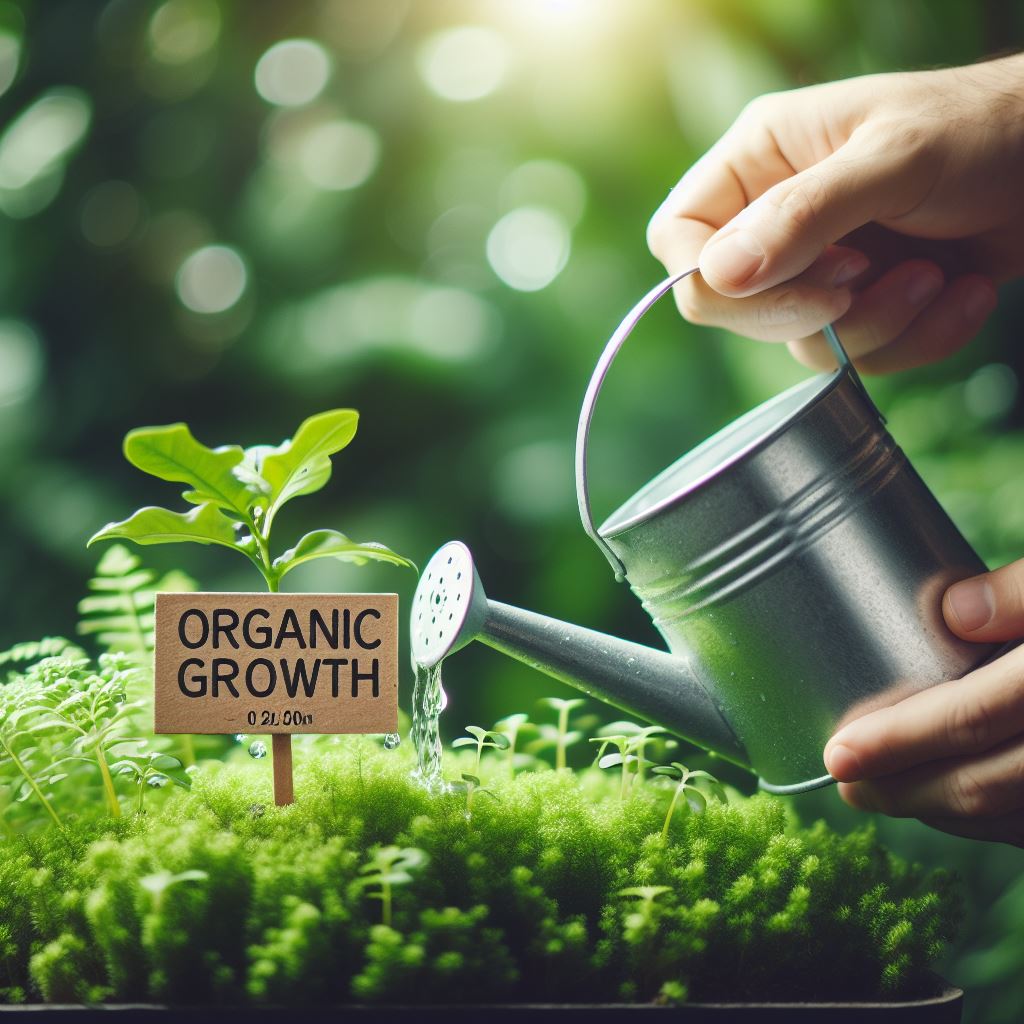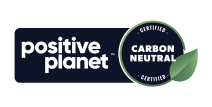In today’s digital world, it can be difficult to stand out, particularly against larger and more established brands and businesses. That is where an organic growth strategy comes in.
Whether you are trying to drive more traffic to your site, promote new products and services, or improve your brand’s visibility, an effective organic growth plan can help.
Continue reading to discover all you need to know about organic development and creating a strategy that will set your digital marketing efforts apart from the rest…
What is organic growth?
Organic growth is a term that refers to how businesses will build up areas they particularly want to target, such as brand awareness, conversion, and traffic, using non-paid tactics and internal resources.
Many businesses invest in organic development, as it is a cost-effective way of generating qualified leads, building credibility, and establishing a strong brand presence, all of which contribute to a long-lasting return on investment over time.
Unlike paid campaigns, organic social does not require regular investments to maintain visibility, but rather will naturally continue to generate results.
Some examples of organic marketing that can contribute to growth are:
- Blog posts
- Case studies
- E-books
- Guest posts
- Reviews
- Podcasts
Advantages of organic growth
There are some great advantages to using an organic growth method:
- It’s cost-effective
- Gives your brand a voice
- Builds trust with your target audience
- Increases brand awareness
- Generates new leads
- Drives website traffic
- Can be used for sustainable growth
- Reduces the need to spend money
- More adaptable than fixed paid campaigns
Disadvantages of organic growth
It is important to know that organic development does also have its disadvantages:
- It can take time to see a return on investment
- Competitors may have an edge if they are using paid methods
- Can be time consuming building up trust and nurturing leads
- Algorithm changes can affect visibility
- Can put a strain on in-house resources
- Negative reviews can be damaging to your brand reputation
- Requires regular checks to stay relevant and keep up with competitors
It is important to consider both the positives and the negatives when creating an effective organic development approach for your business.
How to create an effective organic growth strategy
It can be difficult to know where to begin when creating a strategy using organic tactics.
To help, we have compiled a list of essentials to help you create a strong and resilient strategy:
Develop your audience persona
Understanding your target audience is crucial when creating a successful organic plan.
If you’re struggling to do this, you can carry out market research or use information you may already have to create detailed audience personas.
In order to develop audience personas for your brand, you will need to gather insights about your audience via methods such as interviews, surveys, and social media listening.
To understand your target audience further, you can analyse demographics such as
- Gender
- Age
- Location
- Interests
- Income
- Preferred media channels
- Communication preferences
- Spoken language
- Accessibility
Gaining insights from these demographics can then help you segment your audience and identify any common trends like similar goals or pain points.
You can then use these common characteristics to create informed and detailed audience personas.
Hootsuite recommend giving your audience persona a name, job title, home, and defining characteristics, as if they were a real person.
Do not limit yourself to just one buyer persona if your findings show that you have multiple audiences.
By covering all bases, you can comprehensively decide and address how your products or services can benefit and help your audience achieve their goals.
Establish goals and objectives
An effective organic approach would not be possible without clear goals and objectives driving it.
Break your goals down and make them focused and visual by using the S.M.A.R.T. framework, which ensures your goals are Specific, Measurable, Achievable, Relevant, and Time-bound.
When setting goals and objectives for your organic scheme, it is important to consider any areas of concern you may have.
For example, you may want to build up a high-quality backlink profile, or maybe you have been outperformed by a competitor in the SERPS and you would like to regain and improve your previous position.
Create engaging content
You know your target audience inside out, and you have set your goals and objectives, so now it is time to start creating content.
While it is important to consider your audience, it is also essential that you think about how your content can work for you too. That is where evergreen content can be beneficial.
Evergreen content refers to content that has long-term relevance and requires minimal updates. An example of evergreen content is “how to cook a steak,” as the information will remain the same and it is a topic that people are interested in.
Creating evergreen content can have many benefits, including a higher return on investment, increased shareability and backlinks, and consistent traffic.
Another way you can make sure you are producing high-quality content for your audience is to create cluster content.
For example, you would usually find the above phrase “how to cook a steak” on a cooking blog and this would be the target keyword for the pillar page.
The pillar page serves as the central hub for all other content relating to steak recipes and techniques.
By structuring your content in this way, it makes it easier for users to navigate and understand your content, therefore resulting in potential for more shares, links, and overall organic growth.
Make sure your content is SEO ready
Once you have created your content, it is important that you optimise it for SEO to improve its visibility on search engines. Here are some of the ways you can optimise your content:
- Ensure your focus keyword is included in your title tags, H1, meta description, and URL
- Write a compelling meta description that includes a call to action and makes readers want to read your content
- Structure your content using H1, H2, H3, ensuring they all include relevant keywords you are targeting
- Make sure your URL is not too long and is easy to read
- If you have included images, ensure they have alt text
- Include internal links to relevant cluster content on your site
- Add external links to authoritative sites to support your content
- Always check how your content and site look on mobile – Exploding Topics states that 92.3% of internet users explore the web using their mobile phone.
Build up your social media presence
Part of your organic plan should include establishing yourself on the social media platforms your audience frequently uses.
Building up your organic social media presence can be a fantastic way of engaging with audiences who are already familiar with your brand, as well as introducing yourself to those who are not.
Social media allows you to respond to comments, take users behind the scenes of your business, and solve any issues quickly, helping to boost your brand’s loyalty and users’ trust.
Another benefit of social media is user-generated content. User-generated content refers to content that is created by consumers, such as reviews, photos, and videos.
The impact of user-generated content on businesses and brands has only increased over time, with Everyone Social stating that 70% of customers will consider user generated content reviews or ratings before deciding to purchase.
It is clear that consumers trust other consumers, as it feels less like a sale and more authentic and human.
Positive user-generated content can contribute to an increase in engagement and visibility, boost conversion, and establish trust.
Can you leave a successful organic growth strategy once it is in place?
If you have invested time, resources, and money into bringing your organic approach to life, it would be counterproductive to leave it to run itself.
There are a wealth of opportunities and blockers that could affect your organic development if it is left to its own devices; these include Google updates, content decay, and competitors outperforming you.
It is always better to monitor your strategy’s performance regularly, so you can always be more proactive than reactive to any changes.
Is organic development worth it?
While an organic approach can take time it is well worth the effort for businesses looking for long-lasting results and a return on investment.
In addition, once you have established and invested in a successful strategy, you can reap the rewards of naturally generated results and leads, without the need for further spending.
If you’re not sure where to start or don’t have the time, let an agency like Skittle Digital do all the hard work.
Need help with your organic growth strategy?
If you want to get the most out of your organic growth strategy or would like to know more about implementing one, get in touch today to see how we can help.
We also offer Free Acquisitions Workshops, where you can discuss any areas of concern with our experienced marketers and receive a free, tailored action plan and resources.












